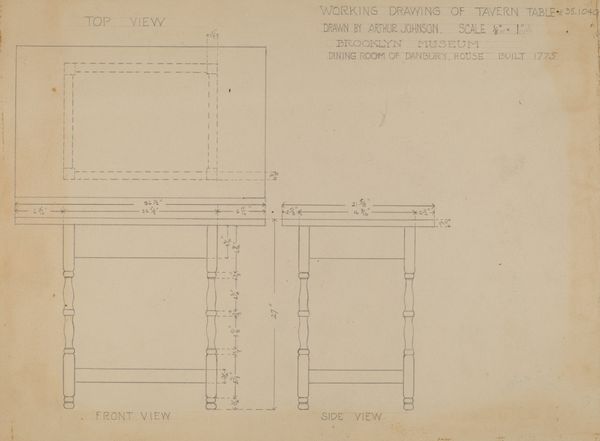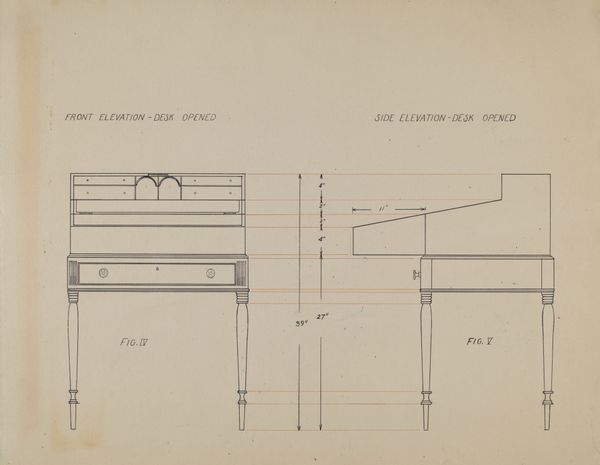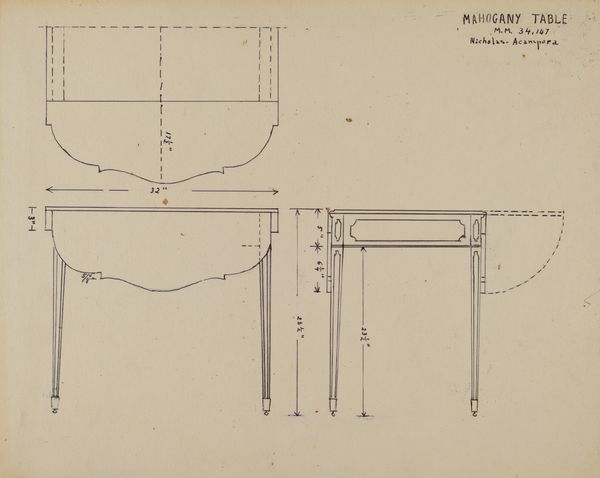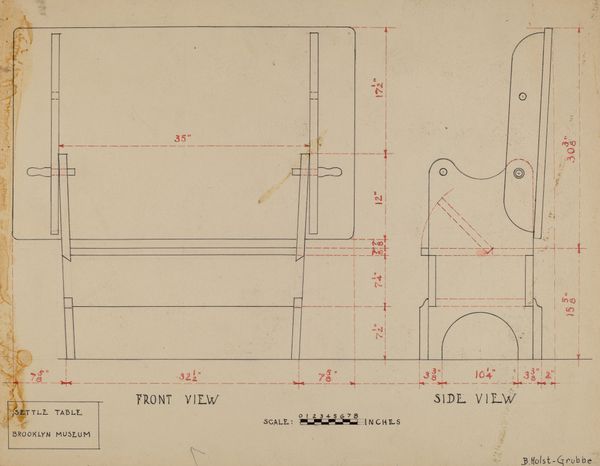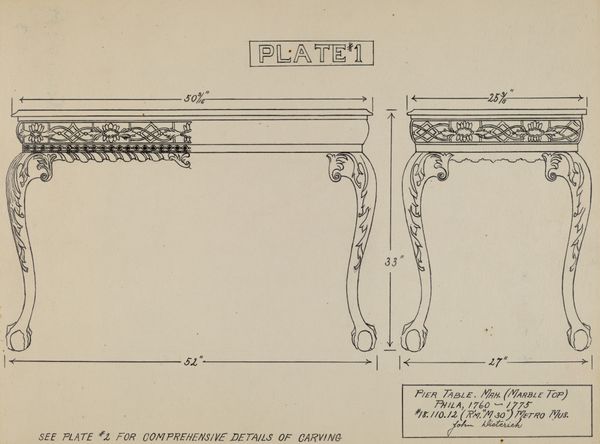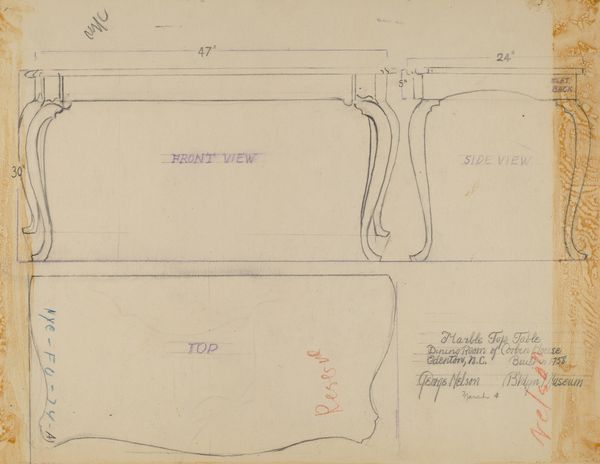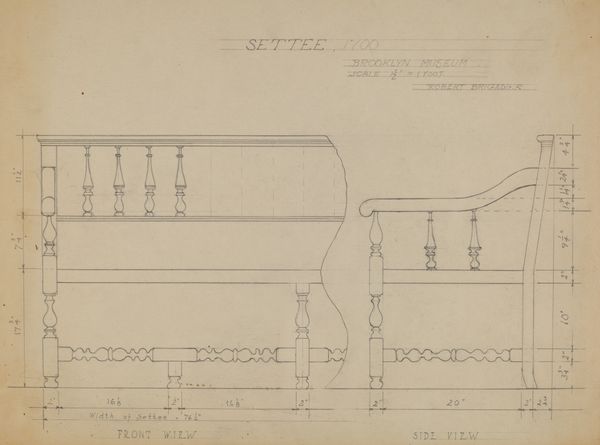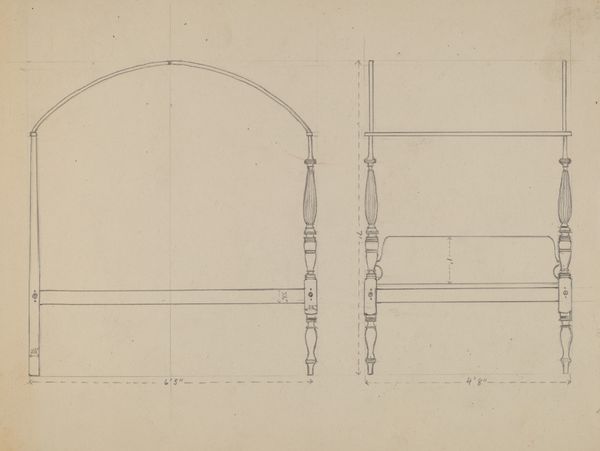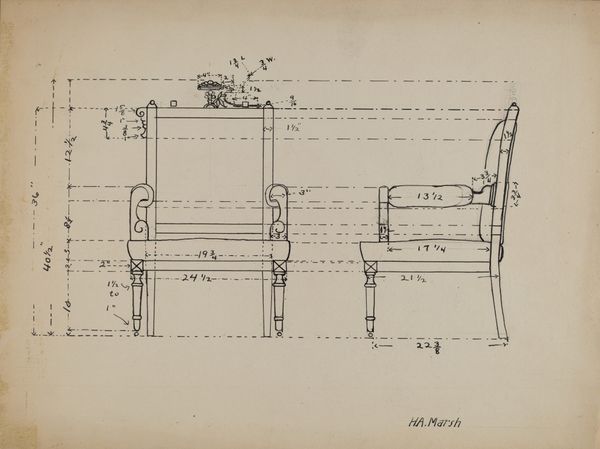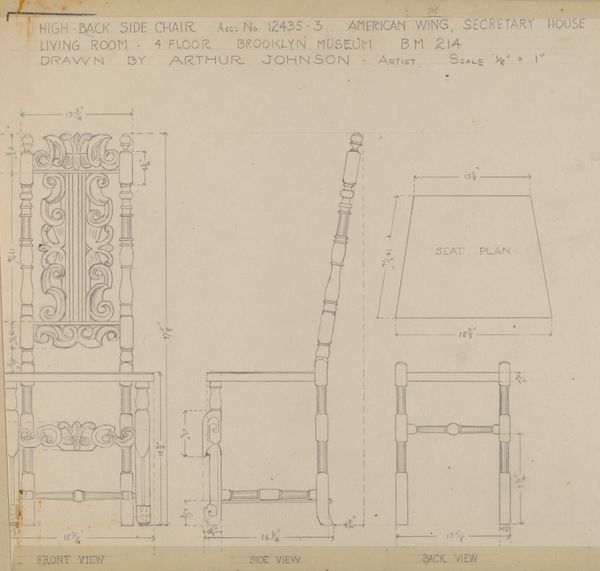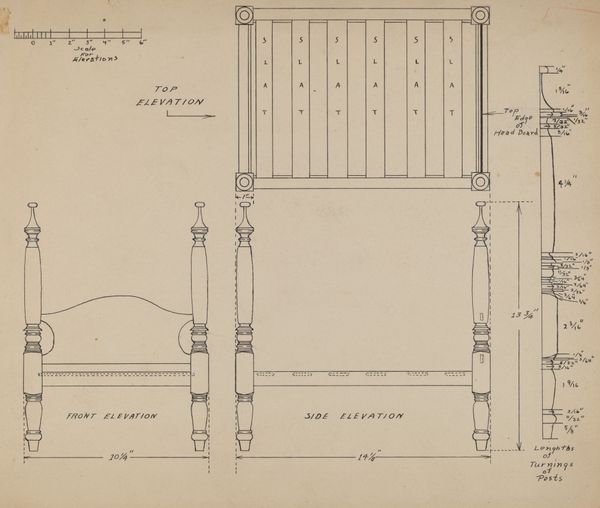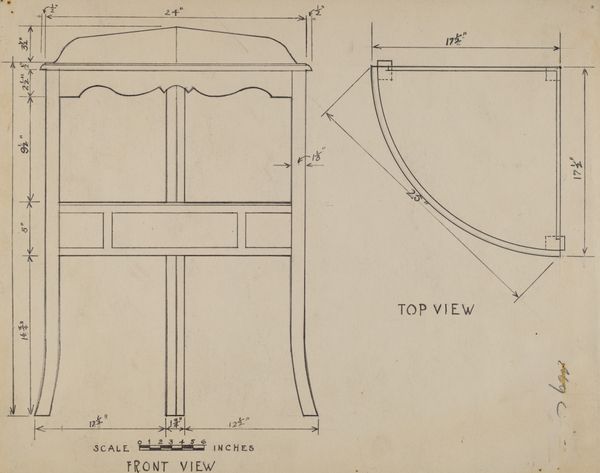
drawing, pencil, architecture
#
architectural sketch
#
drawing
#
aged paper
#
toned paper
#
architectural plan
#
tea stained
#
geometric
#
warm toned
#
pencil
#
architectural section drawing
#
architectural drawing
#
warm-toned
#
architecture drawing
#
architecture
Dimensions: overall: 23.2 cm (9 1/8 in.) Original IAD Object: 82 3/4" high. Trundle: 40" wide x 65" long.
Copyright: National Gallery of Art: CC0 1.0
Curator: Looking at this, I’m struck by its warm tone. It feels… sepia, like a faded memory. Editor: And a well-loved one, at that! The warmth definitely radiates comfort, wouldn't you say? It feels intimate somehow, despite the technical precision. Curator: Precisely. We're examining a work by Jack Bochner, entitled "Bed and Trundle Bed," created sometime between 1935 and 1942. It's a meticulously rendered drawing, a set of architectural plans outlining the construction of a bed, complete with a trundle. The notes indicate the design is modeled on a bed circa 1800 made of cherry and maple. Editor: I love how the medium itself—the pencil on what looks like tea-stained paper—contributes to the overall effect. It bridges the gap between cold, hard architectural rendering and something altogether more human, more…lived-in. I feel like I can almost smell the wood shavings and imagine the craftsman's hands. The little notation that says, "(Trundle movable)"! So quaint. Curator: The architectural notations serve as cultural markers too. Think about the rope spring—a common feature of beds from that era. It suggests a past when comfort was achieved through ingenuity, not mass production. Notice also how he delineates a “side elevation” of the piece next to a plan that shows a view “drawn from foot of bed." Such quaint terminology! The whole drawing resonates with earlier craft traditions. Editor: Absolutely. And those details…they almost take on a life of their own, don’t they? Those spiraled post details are so pleasing and the headboard curves, it's a dream! A practical dream rendered with so much...personality. Curator: Ultimately, this is a beautiful study in functionality and historical consciousness—the aesthetic principles that informed the piece serve both practical and symbolic purposes. It speaks volumes about material culture, memory, and how even the most mundane objects become imbued with meaning over time. Editor: You've nailed it. Looking at this rendering, I’m not just seeing a bed, I’m seeing layers of history, craft, and maybe even the faint outline of dreams past.
Comments
No comments
Be the first to comment and join the conversation on the ultimate creative platform.
